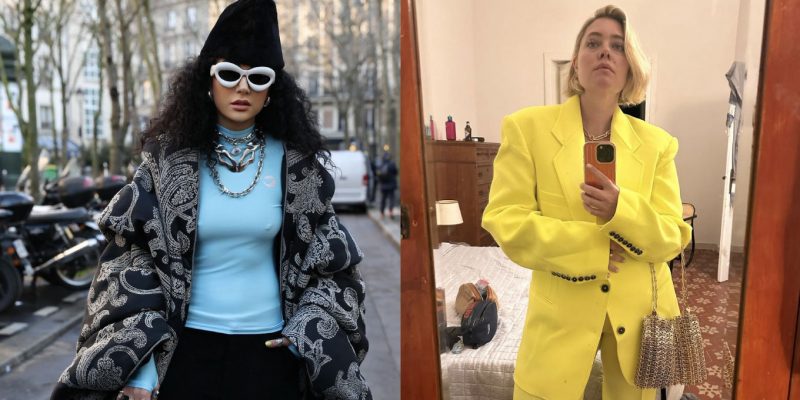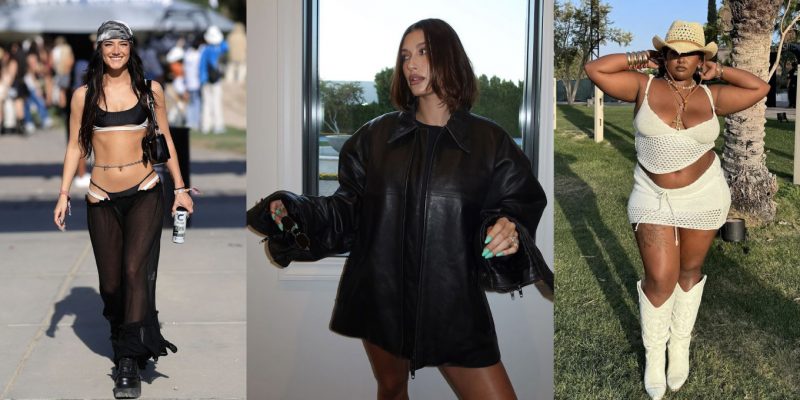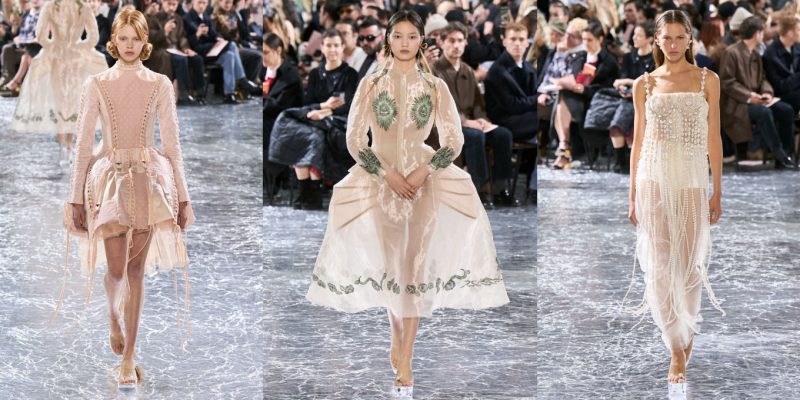Trends
Lace up
Lace: the fabric of choice for sexy sinners and shy saints. It’s simply irresistible!
by : Clara Young- Nov 8th, 2010
Lace is one of those naughty-but-nice fabrics. Nice because old ladies make it and hang it up over their windows. Naughty because it’s sort of see-through and decorates our panties and bras. It’s this combination that makes lace such a postmodern fabric: You see it and it mixes up your emotions. Which is exactly how everyone felt when they saw Christopher Kane’s ode to lace. The pattern looked vaguely like Burano lace— those marvellous old Italian webs woven with needle and silk thread—but the fabric was plasticky and neon, like you had spilled Gatorade over Grandma’s best tablecloth. And the cut! My God! How estranged from lingerie could lace be? Kane’s round-collared jackets and box-pleated skirts were churchy, except for the chromatic jolt. The spray-paint palette united virgin, whore and punk all in one modest skirtsuit.
After earlier collections from Prada, Givenchy,
Erdem and
Dolce & Gabbana, Kane is the latest designer to rethink lace. Why? Because for such a light fabric, it’s deliciously loaded with meaning. And where there is meaning, there is a message…to subvert. That’s why Madonna wore stretchy white lace and chirped “Like a Virgin.” A good Catholic, she was fooling with a near-holy fabric—the stuff of christenings, weddings and deaths—handmade and passed down through the generations. In fact, when it first emerged in the 15th century, lace was a kind of textile hymen: an exquisite, fragile wall between sinning and sainthood. John Francis Regis, the patron saint of lace, was so named because he had the bright idea of teaching girls to make lace in the convent rather than go off to the city and make whoopy. And so it followed that magnificent laces proliferated in the most ecclesiastical of places: sacrilegiously gorgeous point-de-rose laces draped over altars and popes. And because Church and State were so entwined, the secular lace one-upmanship was seen in the extraordinary trimmings on Louis XIV’s shirts and breeches.
“In the 16th and 17th centuries, lace was worn by the clergy, the nobility and the rich,” says Martine Fosse, chief curator at the Cité Internationale de la dentelle et de la mode de Calais. “Only men wore lace then, and it was a feature of military uniforms. Look at Louis XIV. Look at his knees. Those rosettes are extremely sophisticated.”
Learn about the history of lace on the next page…
Christopher Kane and Erdem images courtesy of ImaxTREE.com

When you think that a pair of dress flounces in Alençon lace created for the exhibition in Paris in 1867 required 40 women seven years to make, it is clear that lace was no cheap frill. It employed hundreds of women in Italy, France and Belgium. Still today, a small number of lacemakers continue to make it by hand. They sit over cushions, bristling with pins, clicking long dangling wooden spools back and forth as they loop, braid and twist threads into intricate patterns. “I went to a lace club, and I sat next to mostly senior ladies who taught me the secrets of the craft,” says artist Joep Verhoeven, who once incorporated lace patterns into a chain-link fence. “Lace is like chess because you play it by certain rules and you have to think ahead to plan your next move.”
The cerebrality of lace is something most of us haven’t pondered before. It is chaste if one is old-fashioned, and sexy if one is not, but few of us think of it as brainy. And yet lace is highly informational. In its heyday, during the baroque era, lace, like stained glass, was a cryptogram: To see it was to decipher it. “Lace was extremely codified,” explains Fosse. “You couldn’t wear just any lace. It depended on the dress you were wearing, your gender, your age, your marital status. There were laces a married woman could wear that an unmarried woman couldn’t. The iconography of lace gave one a great deal of information about the person wearing it, but the codes changed from one century to the next.”
Machines forever changed lace conventions. In 1813, during the Napoleonic Wars, John Leavers of Nottingham, England, invented the first lacemaking machine. The most interesting thing about Leavers’ invention was its use of perforated jacquard cards to create pattern. Exactly like the punched cards used in early computers, jacquard (still used today in the fabled Cluny Lace factory in Derbyshire) reiterates lace’s coded nature, expressing it in binary form. Like the steam engine, the Leavers machine precipitated an industrial revolution— one that eventually spread to France, when Leavers machines were smuggled out of England. “Machines made lace available for practically all classes of society,” says Natalia Nekrassova, curator at the Textile Museum of Canada. “They made it possible to produce pieces of limited size, used mainly in clothing, and also large bedspreads, covers and curtains, thus incorporating the lace deeper and broader into society.”
Today lace is going deeper and broader than ever, not just in clothes but on shoes and even makeup compacts: Dolce & Gabbana’s first colour cosmetics line, for example, is called Sicilian Lace. “The interplay of fullness and emptiness makes lace very ambiguous,” says Fosse. It’s that full-Freudian peekaboo quality that makes this fabric as tantalizing now as it was in Catherine de’ Medici’s time. Sweet yet sexy, cute with a hint of controversy, lace weaves a web of intrigue: It tells the world more about you than you might think.
Read more
Holiday fashion: Lace shoes and booties
Fall/Winter 2010-11 trends report
Laced out! Fashion’s new fabric obsession
Wear it well: Ladylike lace
Dolce & Gabbana image courtesy of Marcio Madeira, Meadham Kirchhoff image courtesy of ImaxTREE.com
Newsletter
Join our mailing list for the latest and biggest in fashion trends, beauty, culture and celebrity.
Read Next
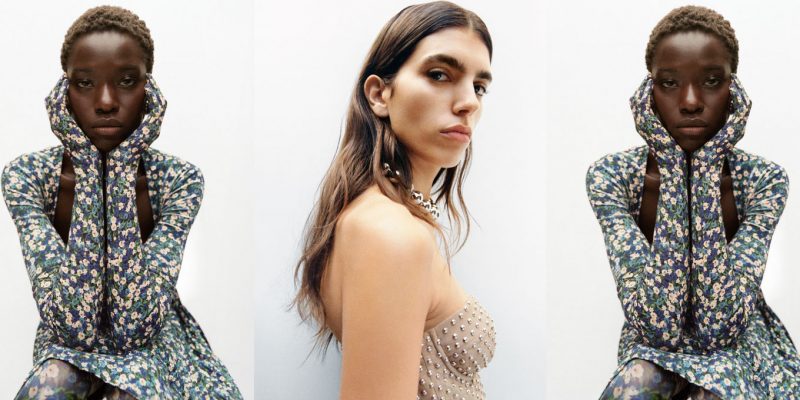
Fashion
H&M's Latest Designer Collab With Rokh Just Dropped (And It's So Good)
We chatted with the emerging designer about the collaboration, his favourite pieces and more.
by : Melissa Fejtek- Apr 18th, 2024
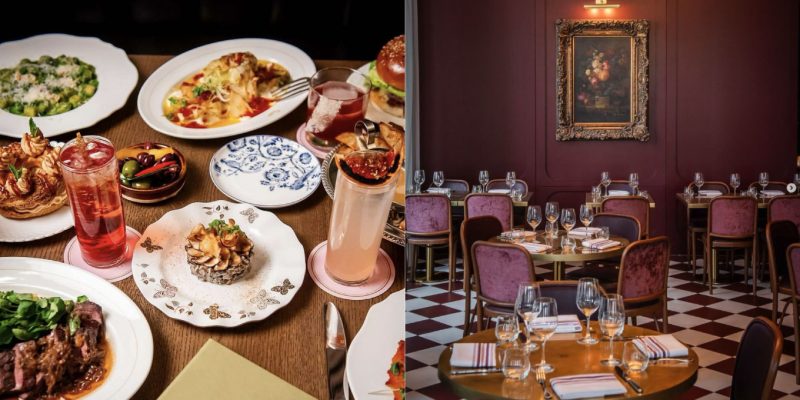
Culture
5 Toronto Restaurants to Celebrate Mother’s Day
Treat your mom right with a meal at any of these amazing restaurants.
by : Rebecca Gao- Apr 18th, 2024

Culture
ELLE Escapes: Savannah
Where to go, stay, eat and drink in “the Hostess City of the South.”
by : ELLE- Apr 15th, 2024

